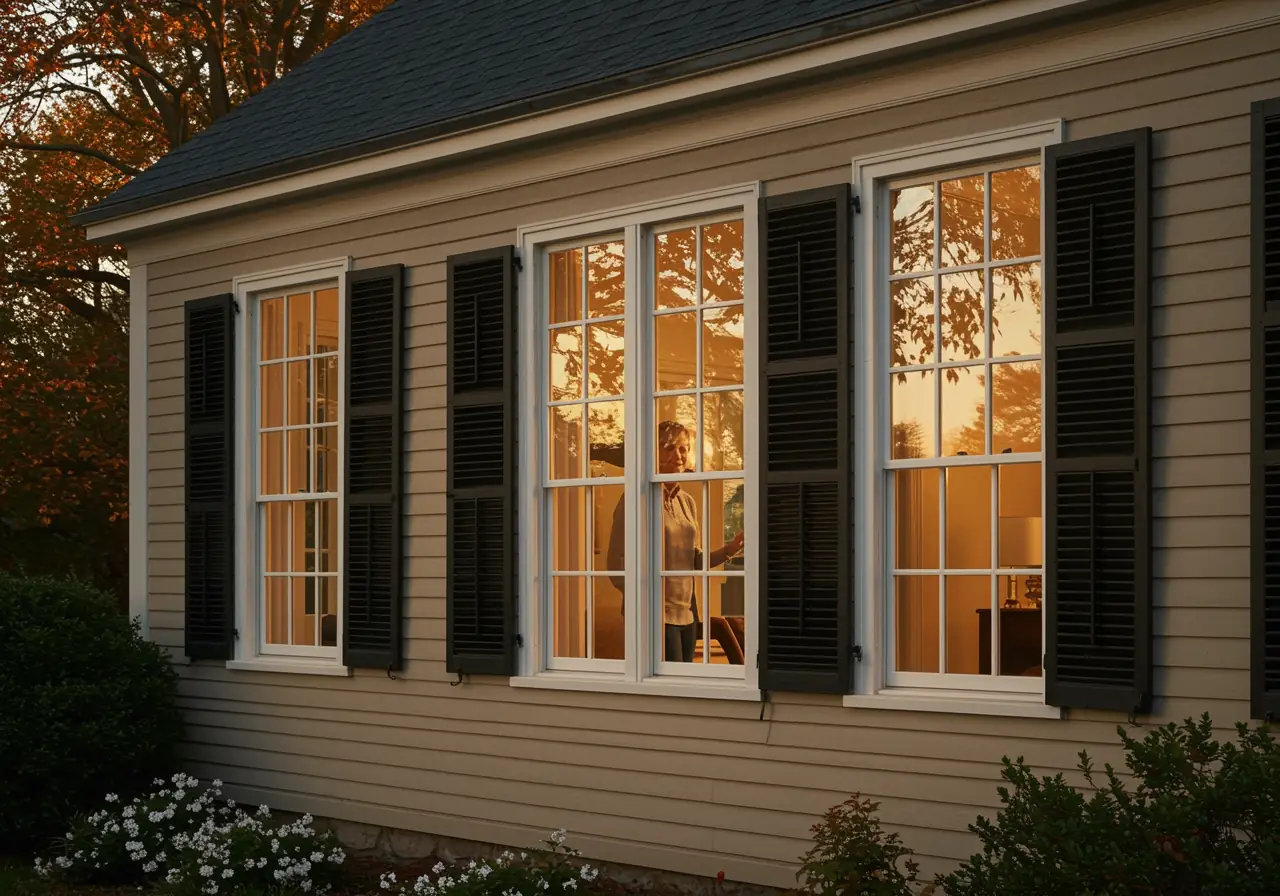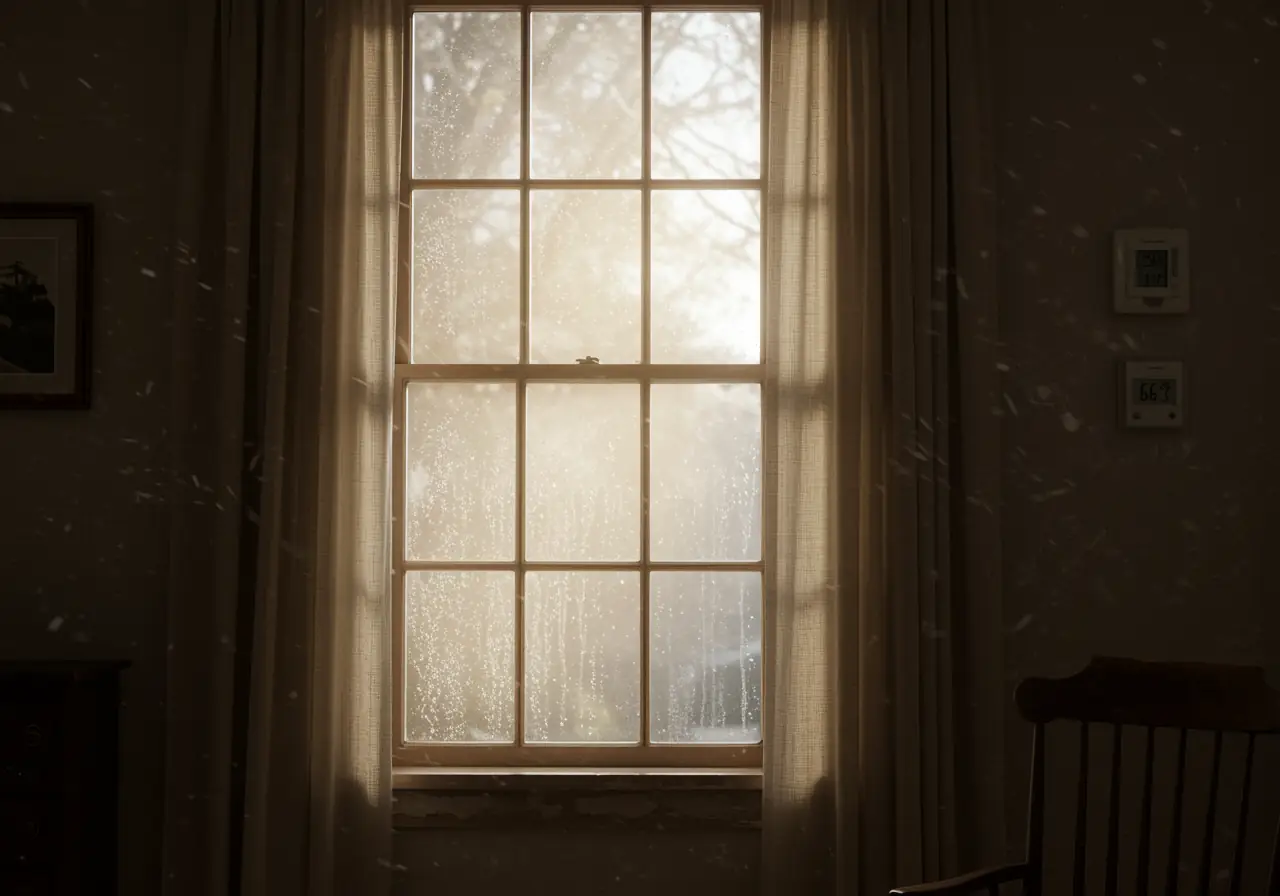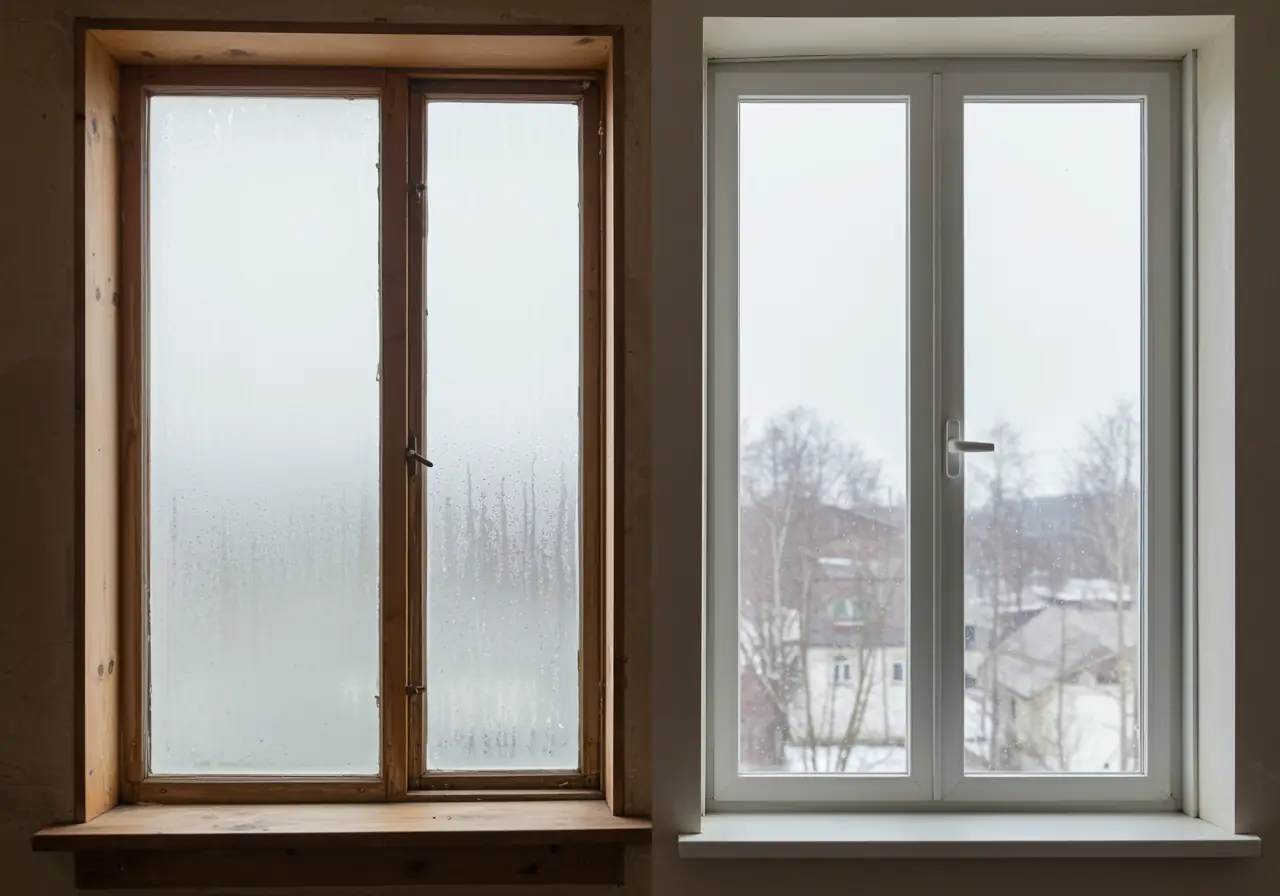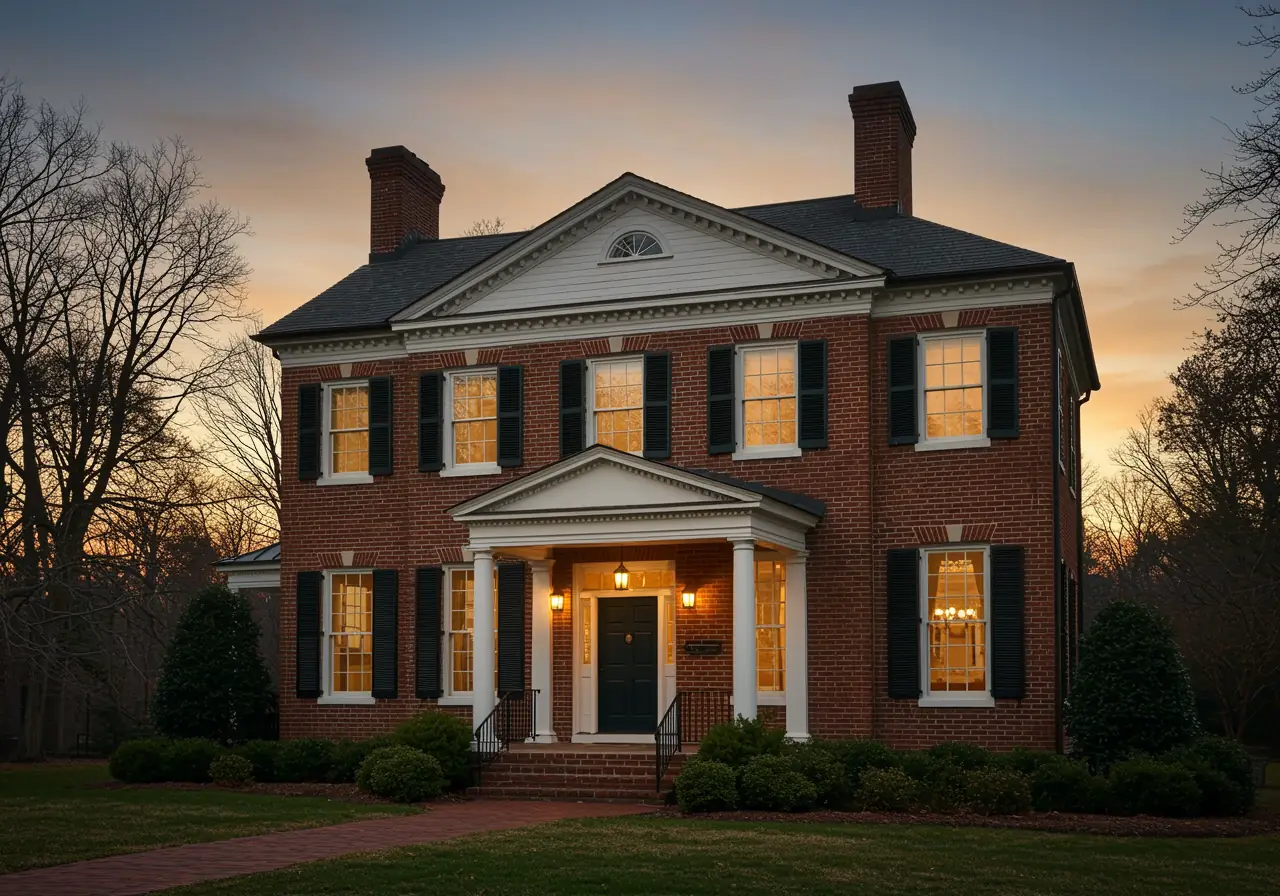High-Performance Windows in Older VA Homes
Contents
Window upgrade in older homes delivers substantial energy improvements by addressing a critical efficiency problem. According to the U.S. Department of Energy, heat gain and loss through windows account for 25-30% of residential heating and cooling energy use. This silent energy drain not only increases your utility bills but also reduces indoor comfort throughout changing seasons.
Upgrading old house windows with energy efficient alternatives offers immediate and long-term benefits. High-performance windows can extend your home's thermal survivability time by up to 3.8 days, while retrofit windows in older homes can lower HVAC energy use by up to 18%. Without tearing apart your walls, replacing a window allows you to seal leaks and boost insulation in these vulnerable areas. Especially noteworthy is that ENERGY STAR-rated windows can save you over $100 on energy bills in the first year alone, cutting annual energy expenditures in half per square foot compared to less efficient windows.

Why Old Windows Fall Short Today
Your older home's historic charm might be enchanting, yet those original windows often silently drain your wallet. Unlike modern alternatives, aging windows frequently underperform in today's energy-conscious world.
Drafts, leaks, and rising energy bills

When window seals deteriorate over time, tiny gaps develop that allow outside air to infiltrate your home. These seemingly insignificant drafts can dramatically impact your comfort and finances. Heat gain and loss through windows account for 25%-30% of residential heating and cooling energy use. Furthermore, leaky windows force your HVAC system to work overtime, potentially increasing utility bills by as much as 25%.
The stack effect compounds this problem – as heated air escapes through your attic, it creates negative pressure that pulls cold air in through window gaps. Consequently, even small air leaks can feel like leaving a window partially open year-round. Degrading weatherstripping and warping frames create gaps that compromise your home's thermal envelope.
Single-pane vs. double-pane windows
The difference between single and double-pane performance is substantial. Single-pane windows provide minimal insulation, making consistent indoor temperature nearly impossible to maintain. In contrast, double-pane windows feature two sheets of glass separated by insulating gas, significantly reducing heat transfer.
This improved insulation delivers measurable benefits. According to the U.S. Department of Energy, replacing single-pane windows with ENERGY STAR-qualified double-pane models can save 7%-15% on annual household energy costs. In fact, homeowners might save between $101-$583 annually after upgrading from single to double-pane windows.

Signs your windows need replacing

Several indicators suggest your windows require attention. If you notice drafts around frames, particularly on windy days, this signals air leaks. Increasing energy bills without corresponding usage changes typically indicate inadequate window insulation.
Condensation between panes reveals broken seals – a telltale sign of window failure. Windows that stick, become difficult to operate, or fail to stay open pose both functionality and safety concerns. Excessive outside noise penetration often indicates deteriorated window performance.
Pay attention to these warning signs, particularly if your windows have reached the 15-20 year mark – the typical window lifespan. Addressing these issues through window upgrade provides immediate comfort improvements in addition to long-term energy cost savings.
Don’t let aging windows drain your comfort and your wallet. If your home still has single-pane or drafty windows, it’s time for an upgrade. My Modern Renovations specializes in professional window replacements that boost energy efficiency, reduce utility costs, and preserve your home’s character. Schedule your free consultation today and discover how modern windows can transform your living comfort year-round.
Choosing the Right Energy-Efficient Windows
Selecting appropriate energy-efficient windows requires understanding key performance metrics and technologies. The right windows can significantly lower energy bills by an average of up to 13% nationwide when replacing single-pane windows.

Understanding ENERGY STAR and NFRC ratings
The National Fenestration Rating Council (NFRC) operates a voluntary certification program that tests and labels windows based on their energy performance. Every ENERGY STAR window displays an NFRC label with critical metrics:
- U-factor: Measures heat transfer rate – lower numbers indicate better insulation
- Solar Heat Gain Coefficient (SHGC): Shows how well a window blocks heat from sunlight – lower numbers reduce cooling loads
- Air Leakage: Measures air passing through a window – values below 0.3 cf·m/ft² are industry standard
- Visible Transmittance: Indicates light allowance on a 0-1 scale
ENERGY STAR windows must meet strict EPA guidelines for your specific climate zone. For northern climates, look for windows with low U-factors, whereas southern regions benefit from low SHGC values.
Low-E glass windows benefits
Low-Emissivity (Low-E) glass features a microscopically thin metallic coating that reflects heat while allowing light to pass through. Benefits include:
- Reduced energy costs by blocking infrared light from outside
- UV ray protection, reducing furniture and fabric fading by up to 75%
- Maintained natural light levels with minimal visible light reduction
- Improved insulation, keeping heat inside during winter
Gas fills: Argon vs. Krypton
Both gasses improve window insulation by reducing heat transfer between glass panes:
Argon: Six times denser than air, more affordable, ideal for double-pane windows with ½-inch or wider spaces. Most commonly used due to cost-effectiveness.
Krypton: Twelve times denser than air, performs best in smaller (¼-⅜ inch) spaces typically found in triple-pane configurations. Offers superior thermal performance but at 40-300% higher cost.
Frame materials: Vinyl, wood, fiberglass
Frame material significantly affects durability, maintenance, and energy efficiency:
Fiberglass: Eight times stronger than vinyl, resistant to warping and expansion. Offers excellent insulation but costs more than vinyl.
Vinyl: Affordable, low-maintenance, and good thermal performance. Never needs painting but may warp over time.
Wood: Natural insulator with traditional appeal, ideal for historic windows. Requires regular maintenance to prevent rot and pest damage.
Best windows for historic homes
For historic buildings, preservation should be prioritized. The common misconception that replacing historic windows saves 50% in energy costs is untrue. Consider:
- Repair existing historic windows when possible – traditional windows often function over 100 years
- Install weatherstripping and proper caulking before considering replacement
- Add exterior storm windows or interior storm windows to improve thermal efficiency without replacing originals
- If historic window replacement is necessary, choose frames that match the historic character
Ready to upgrade to energy-efficient windows that fit your home’s style and climate? My Modern Renovations installs high-performance, ENERGY STAR-rated windows that boost comfort, efficiency, and value without compromising your home’s character.
Planning a Smart Window Replacement
Properly planned window replacements deliver the best results for your old house. Taking time to assess, budget, and choose the right professionals ensures your investment pays off for decades.

Assessing your home's architecture and needs
Begin with a thorough in-person examination of both interior and exterior window conditions. Use a level and tape measure to identify issues like sagging headers or out-of-square openings. Take three measurements (horizontally and vertically) and use the smallest to account for irregular openings. Notice details like water direction from roofs that might indicate potential rot. Additionally, consider your home's esthetic - preserving traditional windows may require different installation approaches than completely modernizing.
Budgeting for energy efficient replacement windows
Replacement windows typically cost between USD 180.00 and USD 410.00 per window, averaging USD 280.00 each. Complete home window replacement projects range from USD 6,000 to USD 50,000 depending on window quantity and quality. Several factors affect your budget:
- Frame material (vinyl being more affordable than wood or fiberglass)
- Glass type (standard double-glazed costs USD 3.00-6.00 per square foot versus tempered at USD 12.00-14.00)
- Installation complexity (structural issues in older homes require additional work)
- Number of windows (replacing multiple windows simultaneously may reduce per-unit costs)
Working with window installation professionals
Despite DIY temptations, window installation requires specialized expertise. Professional installers ensure windows are installed plumb, level, and square while allowing them to "float" properly in the opening. The full timeline typically spans 4-15 weeks from consultation through installation, with actual installation taking 30-60 minutes per window. Quality installation provides:
- Protection against air/water infiltration
- Proper structural support
- Warranty coverage
- Year-round service capability

Permits and historic home considerations
Most municipalities require permits for window replacements, even for like-for-like installations. Skipping permits risks stop-work orders, fines, and complications when selling your home. For historic properties, additional regulations apply:
- Review by local historic preservation panels
- Documentation of existing windows and proposed replacements
- Stricter requirements for street-facing windows
- Different standards for primary versus secondary elevations
Historic district panels typically follow the Secretary of the Interior's Standards for Rehabilitation, though regulations vary by location. Some districts may allow energy-efficient options like historic aluminum windows or fiberglass windows if they maintain the original appearance.
Planning to replace your old windows? My Modern Renovations handles everything from assessment and permits to expert installation, ensuring your project is done right, on time, and built to last for decades.
Long-Term Benefits of Upgrading Old House Windows
Investing in quality replacement windows delivers benefits that extend far beyond initial installation. The ongoing advantages accumulate over decades, creating lasting value for your historic home.
Energy savings windows Virginia
Modern energy-efficient windows dramatically reduce energy consumption. Remarkably, high-performance windows can cut heating and cooling costs by up to 13% nationwide when replacing single-pane windows. This occurs because windows typically account for 25%-30% of residential heating and cooling energy use. By creating multiple barriers against heat transfer, double or triple-pane designs maintain consistent indoor temperatures regardless of exterior conditions.

Noise reduction windows Virginia
One often overlooked advantage of replacement windows is superior sound insulation. Indeed, soundproofing windows can reduce noise levels in your home by 75% to 95% compared to single-pane alternatives. Moreover, the space between glass panes filled with argon or krypton gas helps diminish sound wave transmission, transforming your space into a quieter sanctuary even near busy streets or noisy neighborhoods.
UV protection and indoor comfort
High-quality windows block up to 99% of harmful UV rays, protecting your furniture, flooring, and artwork from fading and deterioration. Essentially, these windows act like sunscreen for your house, reducing fading by up to 75% without noticeably decreasing visible light. Beyond preservation benefits, this protection creates healthier living environments with reduced UV exposure.
Return on investment window upgrades
Window replacement delivers impressive financial returns. Overall, homeowners typically recoup 70-80% of window replacement costs when selling, with some markets seeing ROI as high as 85%. Furthermore, the combination of energy savings, reduced maintenance, and increased property value makes window upgrades financially sound investments.
Environmental impact and sustainability
Upgrading to energy-efficient windows considerably reduces your home's carbon footprint. Subsequently, decreased energy consumption directly translates to fewer greenhouse gas emissions, contributing to environmental conservation. Energy-efficient homes require less power from plants, thereby reducing air and water pollution while helping preserve local ecosystems.
Conclusion
Replacing windows in your older home represents one of the most effective ways to enhance energy efficiency while preserving architectural character. Throughout this guide, you've seen how aging windows silently drain energy and increase utility costs. After careful window replacement, you can expect notable improvements in your home's thermal performance, potentially cutting heating and cooling energy use by up to 18%.
The difference between outdated single-pane windows and modern energy-efficient alternatives is significant. Double-pane windows with Low-E coatings, gas fills, and quality frames create multiple barriers against heat transfer, maintaining consistent indoor temperatures regardless of exterior conditions. Consequently, your HVAC system works less, extending its lifespan while reducing your monthly energy bills.
Finding the right replacement windows depends on understanding key performance metrics like U-factor and Solar Heat Gain Coefficient. These ratings help you select windows optimized for your specific climate zone. Additionally, frame material choices - whether vinyl, wood, or fiberglass - affect both performance and esthetics, particularly important for historic homes where preservation concerns must balance with efficiency goals.
Smart planning makes all the difference in successful window replacement projects. This process involves thorough assessment of your home's architecture, realistic budgeting, and working with qualified professionals who understand the unique challenges of older houses. Proper installation ensures windows function correctly while providing maximum energy benefits.
Beyond immediate comfort improvements, window upgrades deliver long-lasting advantages. These benefits include substantial noise reduction, protection against harmful UV rays that damage furnishings, and positive environmental impact through reduced energy consumption. From a financial perspective, quality window replacement typically returns 70-80% of costs when selling your home.
Your old house deserves windows that honor its character while performing to modern standards. Though the upfront investment might seem substantial, the combined benefits of energy savings, increased comfort, noise reduction, and property value enhancement make window replacement a worthwhile endeavor. Take time to research options thoroughly, understanding that well-chosen windows will serve your historic home faithfully for decades to come.
Give your home the upgrade it deserves with expert window replacement by My Modern Renovations. Our team installs high-performance windows that boost efficiency, comfort, and value - while preserving the timeless beauty of your older home.
Key Takeaways
Upgrading old house windows is one of the most impactful home improvements you can make, addressing energy waste while preserving your home's character.
• Old windows waste 25-30% of your home's heating and cooling energy - replacing them can cut HVAC costs by up to 18% and save over $100 annually in the first year alone.
• Look for ENERGY STAR windows with proper NFRC ratings - focus on low U-factors for northern climates and low SHGC values for southern regions to maximize efficiency.
• Professional installation and permits are essential - proper installation ensures optimal performance, while permits protect your investment and prevent legal complications, especially in historic districts.
• Window replacement delivers 70-80% ROI when selling - beyond energy savings, new windows reduce noise by up to 95%, block 99% of UV rays, and significantly increase property value.
• Plan thoroughly before purchasing - assess your home's architecture, budget $180-$410 per window, and choose frame materials that balance efficiency with your home's historic character.
The investment in quality replacement windows pays dividends through decades of improved comfort, lower energy bills, and enhanced home value while maintaining your old house's architectural integrity.
FAQs
Q1. Are energy-efficient windows worth the investment for older homes? Yes, energy-efficient windows are typically a worthwhile investment for older homes. They can reduce heating and cooling costs by up to 18%, improve indoor comfort, and increase property value. Modern windows also offer better insulation, noise reduction, and UV protection compared to older models.
Q2. How do I choose the right windows for a historic home? When selecting windows for a historic home, consider both efficiency and preservation. Look for ENERGY STAR-rated windows with appropriate NFRC ratings for your climate. Choose frame materials and styles that match your home's character. In some cases, historic window repair or adding new storm windows may be preferable to full replacement.
Q3. What's the typical cost range for replacing windows in an old house? Window replacement costs in older homes generally range from $180 to $410 per window, with whole-house projects typically falling between $6,000 and $50,000. Factors affecting cost include frame material, glass type, installation complexity, and the number of windows being replaced.
Q4. Do I need permits to replace windows in my old home? Yes, most municipalities require permits for window replacements, even for like-for-like installations. This is especially important for historic homes, which may have additional regulations and review processes. Always check local requirements before starting your project to avoid potential fines or complications.
Q5. How long does it take to replace windows in an older home? The timeline for window replacement in older homes typically spans 4-15 weeks from initial consultation through final installation. The actual installation process usually takes about 30-60 minutes per window. However, this can vary depending on the complexity of the project and any unforeseen issues specific to older structures.

4 steps to get your house safe
Book your Consultation
Removal & Preparation
Professional Installation
Post-Care & Warranty
Licensed & Insured
Turn Key Solution
Low Interest Financing







